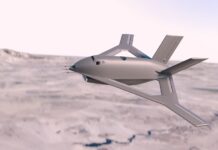Dragon Eye Miniature Aerial Vehicles were operated in operation Iraqi Freedom (OIF) throughout the war, flying mostly over flat, open desert, small towns, and cities and over the edges of Baghdad. Many missions successfully countered windy and sandy conditions. Most flights were unplanned, responding to opportunities and specific tactical requirements. Some missions were planned but not executed due to the rapid operational tempo. The majority of units kept Dragon Eye as a battalion asset with missions tasked by the battalion commander, intelligence officer, or higher command level. Only one unit used Dragon Eye at the company-level. This unit used Dragon Eye the least, as the company commander was too busy with his missions and did not have the staff and specialists to support UAV tasking plans. The most proficient operators for the MAV systems were those with prior intelligence or reconnaissance background, as they had experience in analyzing and reporting what they could see in real time. Dragon Eye units coordinated flights with the battalion air officer or company forward air controller. Coordination included the determination of maximum altitude, keeping to one side of a particular road etc.
Among the missions flown by Dragon Eyes during OIF were point and area reconnaissance, confirmation of other intelligence sources, survey of city area, before the entry of forces, reconnaissance of bridges and routes, supporting mounted and foot patrols, identification of suspected enemy forces, to eliminate fratricide, battle damage assessment and force protection for convoys. The sensors used proved effective for showing people, vehicles, tanks, APCs and guard posts. However, these sensors could not identify people, except by their actions or tell if they were armed, find what effect friendly artillery had on an enemy position, or classify some vehicle types.
Additional parts of this article:












